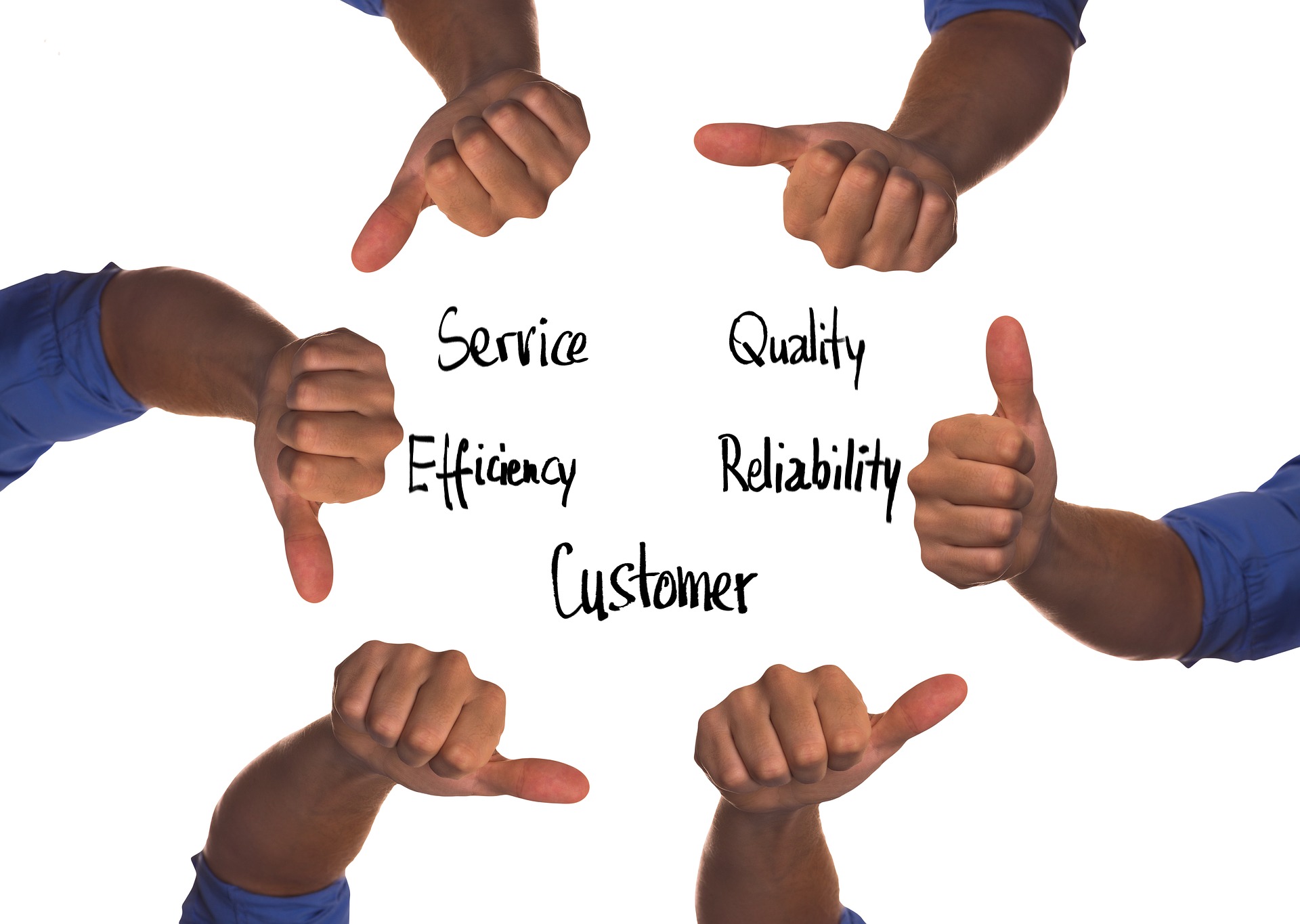10 Effective Techniques to overcome Sales Objections
10 minutes read

“I’m OK with the current situation and don’t feel the need to change.”
“It’s too expensive. We don’t have budget.”
“I have to focus on other things first. It’s not the right time. Why now?”
“We’re too small. We see the value, we’re just not ready.”
“We already use another vendor.”
These are some common objections/concerns that sales reps get to hear from their prospects regularly. The question isn’t whether your prospect has objections– It’s about how your sales reps take those objections and how they resolve it.
Every buyer has at least one major reason not to buy. It’s the job of your sales team to overcome this objection and make the sale happen. A salesperson’s inability to handle objections costs companies thousands of dollars each year. So, how can you ensure that your sales reps identify, surface, and handle these issues and win the business?
Here are the 10 most common sales objections and ways to prepare your team to handle those objections:
1. Change the Mindset

The first step in teaching your reps to handle objections is to make them stop looking at the objections in a negative way. In fact, make them comfortable with facing objections Because the prospective clients aren’t objecting – they are trying to express a real concern. So, sales reps don’t need to overcome the objection. They just need to look deeper, explore the real concern, and help your prospect resolve it so they can move forward.
Here is what you can do to make your reps get comfortable with handling objections - give a customer profile and an objection that the customer has raised to each of your reps. Some of the common objections that sales reps face regularly are:
“I don’t have the budget”
“I will buy it next quarter”
Ask them to study the client and list down the possible reasons/concerns of the clients due to which she might have raised the objection. Select the answer that is closest to the actual reason and discuss it with your team. Then, repeat the process with another client.
2. Crowd-source your responses

All objections can be anticipated. Some of the common objections are:
Your price is too high
We need to meet the team we’ll be working with
The solution we have now works just fine
We have other priorities right now
We need to discuss and get back to you
The sales team should get together and create responses to the common objections they hear. Then someone should role-play the buyer. Reps need to hear themselves responding and receiving feedback from prospects (even hypothetical ones).
The team should also discuss what to do if a buyer doesn’t verbalize an objection but it’s clear from her body language and/or tone of voice that she has one.
3. Use active listening

Successful salespeople use their listening skills and act as sounding boards for their prospects and clients. A lot can be learned by simply listening. Sometimes, it is appropriate to reflect back what has been said for reconsideration from a different angle. Sales reps ability to clarify an issue will serve the client well. You can conduct two activities to improve active listening of your sales reps:
Exercise #1: Convert to a question
A statement is difficult to respond to. So, make the sales reps convert the statement to a question and answer it.
For example, you can give an objection statement like “I don’t think I could use that product.” The sales rep can then respond by converting that statement into a question like “What I hear you wondering is, ‘what benefits are there for me in this product?”. This gives them a way to proceed by answering the question, not rebut the statement.
Exercise #2: Reflect and listen
There might be situations when the client’s intentions are not very clear from their statements. In such situations, sales reps have to do a little more than reading between the lines. Conduct role-plays where your reps focus on listening to your prospect’s voice inflections, observing body language, and hearing the words to uncover how they feel. This helps them to have further discussions by reflecting her emotions back to her. This is especially helpful if the prospect’s objection does not give you enough information.
For example, the prospect might say, “The price is too high.”
Seeing the emotion behind the words, reps could say, “You feel frustrated about the price?”
The prospect might say, “Sure, I feel frustrated. The budget we are working with right now does not allow me to spend so much at this point. How can I do business when money is so tight?”
They will then be able to save the day with, “That’s not an insurmountable problem. We have a flexible payment plan with which you can only pay for what you really need.”
4. “The price is too high” objection

Train your sales reps not to be afraid of price objections. In fact, they have to be happy when they hear them because questions and comments about the price indicate the client’s interest in the product. After all, no one asks for a lower price or does price comparison unless they are interested. Skeptical Stanley is the type of prospect who is likely to do a lot of price analysis before making a decision.
So, instead of reflexively responding, train your sellers to consider the buyer’s desire for your product and the value of your product. Ask them to think and draft a response that covers the following aspects:
They should talk about price just as they would talk about any other feature of the product.
Defend your price by showcasing your brand value.
Link the price to the value rather than discussing it in isolation.
Once everybody presents their response, select the best one and discuss it with the team - how and why it works.
Advice your salespeople that throughout the conversation, they should keep in mind that they are talking to a hot prospect who has expressed interest.
Here is an example of handling the “Price Objection”:
Buyer: That’s not something we’ve budgeted for.
Seller (responding to buyer interest): The urgency you described suggests you’ll be working outside your budget, rather than letting this problem get worse and worse until the new budget year.
Buyer: We’ll have to do something.
Seller: Let’s talk about the money you’ll be saving once you solve this problem …
5. A/B Test the responses

As sales evolves and technology improves, sales reps need to be more scientific and data-driven to survive. One of the ways to do this is to A/B test everything they do, specifically when it comes to objection handling.
Choose an objection that your sales reps might have been getting regularly over the past few days. Now, develop two different best approaches to handle it.
Then, the next 10 times that objection comes up, ask them to use the first approach. The next 10 times, ask them to use the second approach. Track the results to see which approach yields a better response.
Once you find an approach that works perfectly for that objection, pick another common objection and repeat the process. Include the winning strategies into your sales playbook.
6.The walk-back technique

Walk-back is one of the best objection handling strategies. This technique is useful when prospects ask a question or make an assertion that implies they are shopping around, questioning your price or sharing other feedback that might make the seller defensive. For example, let’s say a prospect tells the sales rep that they are shopping around for solutions and aren’t yet sure if yours is best for them. Decisive Dona is the perfect example of the type of prospect who would say this.
Many salespeople would get defensive at this point, try to justify their product’s superiority, and so on. But to handle this situation efficiently, you can conduct a role-play and make your reps practice “The walk-back” technique.
In this technique, the sales rep’s response to the above objection should go something like this:
“That’s a great idea because our solution certainly isn’t for everybody. And I’m not sure I know enough yet about your business objectives and needs to even recommend our solution over others … ”
From there, your reps can talk about the attributes of the company that are a good fit for your solution or dig deeper with the prospect on their needs, objectives, goals to connect those directly with what your solution can do.
7. “Current solution works just fine” objection

A common sales objection is that the product we buy from our current vendor “works just fine.” Skeptical Stanley and Analytical Albert represent this type of customer persona.
What we don’t want to do here is to pitch how your product is so much better, or challenge them in a way that makes them feel like you are questioning their decision-making ability.
If that happens, the buyer will only dig in their heels and defend their buying decision. A better approach is to ask the buyer what they like about the current product and vendor.
Ask your sales reps to prepare some questions to probe the clients and uncover as much information as they can about the existing vendor. The prospect may mention a few things they like, but inevitably they will talk about all the problems that the product doesn’t solve or issues that it causes in the organization.
When that happens, sales reps will have the opportunity to present a case for how your product can remedy those challenges.
For example, if the buyer says when they have an issue it can take days to get a response.
Your sales reps can respond like– “We assign a dedicated account manager to your team who will respond within X number of hours when alerted to a problem.”
Advise them to be sure not to promise something that your company cannot deliver. Focus on how you can solve their problems, which will open the door to closing the deal.
8. Learn From Your Losses

Make your sales reps review their lost opportunities over the past few years and look for themes. Questions to ask include:
Which sales objections came up most often? Which ones were the deal breakers?
What areas will require product development? What can you work or talk around?
Also, make them review near losses and close calls– opportunities they won but almost didn’t. Questions to ask include:
What were the biggest hurdles to closing the sale? How did you overcome them?
Use these insights to create a “cheat sheet” of common objections and craft 2-3 potential responses for each. Test them out and revisit them often.
9. Stop putting up speed bumps

All prospects have a vision of their ideal solution. This gets them ready to buy. A sales rep’s job is to help them realize that vision, not distort it.
Sales reps should avoid the below distortions while speaking to the clients:
Answering un-asked questions
“Pitching” unwanted features and benefits
Generally misaligning your solution to their pains or use case
Saying anything that creates unnecessary risk in the prospect’s mind
10. Go for the “No”

“Is it over?” “Is this going to be a deal-breaker?” “Should we just call it quits?”
“Walking away” tests an objection’s importance and identifies the prospect’s real concern.
When there’s a particular objection that comes up repeatedly, advise your reps to not wait for the prospects to bring it up. Instead, they can get it on the table early and seek resolution. This builds genuine credibility and rapport.
Don’t worry: Just because you’re walking towards the door doesn’t mean you have to go through it… unless you want to.
Want to know about 6 unique buyer personas that salespeople often come across?
The 6 Buyer Personas and how to train your team to sell to them
Learn about the top sales methodologies for closing complex deals?
Top 6 Sales Methodologies for Closing Complex Deals
How SmartWinnr can Help?
SmartWinnr is an easy-to-use mobile platform to help your sales teams stay up-to-date with the latest product knowledge, market information, competitor information, selling techniques, and more.
Organizations all over the world are using SmartWinnr to empower their sales teams. Interested to learn how? Talk to us today!
Published on Tue Aug 27 2019
